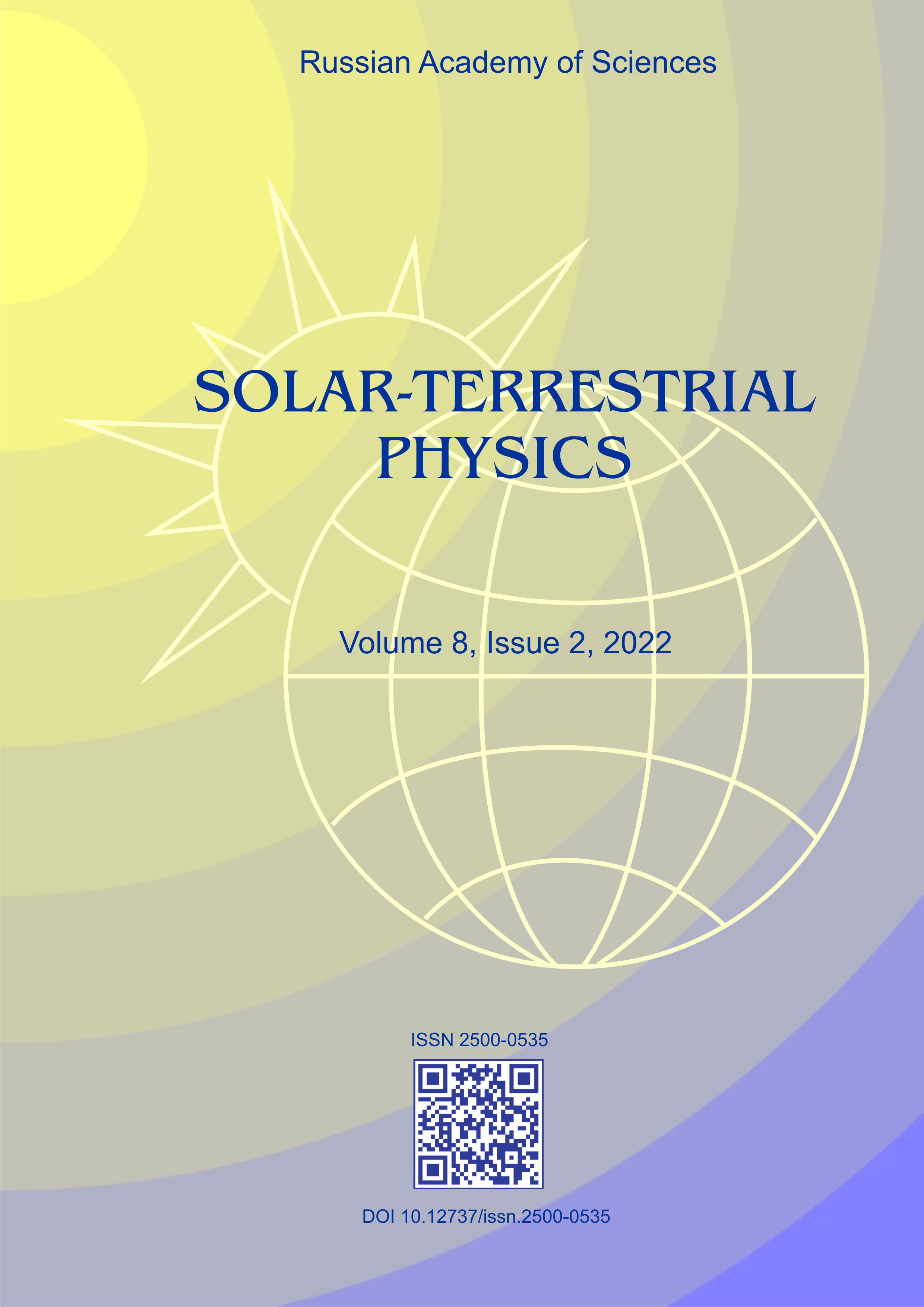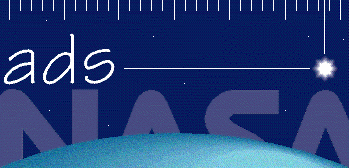Геофизический центр РАН
Уфа, Россия
Институт физики Земли им. О.Ю. Шмидта РАН
Москва, Россия
Институт физики Земли им. О.Ю. Шмидта РАН
Геофизический Центр РАН
Москва, Россия
Институт космических исследований РАН
Уфа, Россия
An interactive computer model of a short-term (with a horizon 30–70 min) forecast of aurora intensity has been developed in the form of a web-based geoinformation system. The OVATION-Prime empirical model is used as the basic software, which establishes statistical relationships between parameters of the solar wind, the interplanetary magnetic field, and auroral particle fluxes. On the basis of this model, a system has been built which simulates the spatial planetary distribution of the probability of observing auroras and a number of accompanying quantities. Data visualization is carried out on the basis of the virtual globe technology and is provided to the end user via a specialized web service. The forecast has been verified by comparing the model predictions with the data from 16 cameras conducting continuous observations of the auroras in the visible spectrum. The proportion of coincidences between the predicted and observed auroras was 86 %. The developed service enables both forecasting and analysis of past events. The system allows us to compare the spatial distribution of probability of auroras with railway transport systems for the territory of the Russian Federation.
auroras, magnetic storms, auroral zone, space weather, geoinformation system
1. Afraimovich E.L., Astafyeva E.I., Demyanov V.V., Gamayunov I.F. Mid-latitude amplitude scintillation of GPS signals and GPS performance slips. Adv. Space Res. 2009, vol. 43, pp. 964-972. DOI:https://doi.org/10.1016/j.asr.2008.09.015.
2. Boteler D.H. Modeling geomagnetic interference on railway signaling track circuits. Space Weather. 2021, no. 19. e2020SW002609. DOI:https://doi.org/10.1029/2020SW002609.
3. Demiyanov V.V., Yasukevich Yu.V. Space weather: risk factors for Global Navigation Satellite Systems. Solar-Terr. Phys. 2021, vol. 7, no. 2, pp. 28-47. DOI:https://doi.org/10.12737/stp72202104.
4. Hardy D.A., Holeman E.G., Burke W.J., Gentile L.C., Bounar K.H. Probability distributions of electron precipitation at high magnetic latitudes. J. Geophys. Res. 2008, vol. 113, A06305. DOI:https://doi.org/10.1029/2007JA012746.
5. Kasinsky V.V., Ptitsyna N.G., Lyakhov N.N., Tyasto M.I., Villoresi J., Jucci N. Influence of geomagnetic disturbances on the operation of railway automation and telemechanics systems. Geomagnetizm i ajeronomiya [Geomagnetism and Aeronomy]. 2007, vol. 47, no. 5, pp. 714-718. (In Russian).
6. Khorosheva O.V. Prostranstvenno-vremennoe raspredelenie polyarnykh siyanii [Spatial-temporal distribution of auroras]. Moscow: Nauka, 1967, 82 p. (In Russian).
7. Kosar B.C., MacDonald E.A., Case N.A., Zhang Y., Mitchell E.J., Viereck R. A case study comparing citizen science aurora data with global auroral boundaries derived from satellite imagery and empirical models. J. Atmos. Solar-Terr. Phys. 2018, vol. 177, pp. 274-282. DOI:https://doi.org/10.1016/j.jastp.2018.05.006.
8. Martines-Bedenko V.A., Pilipenko V.A., Hartinger M.D., Engebretson M.J., Lorentzen D.A., Willer A.N. Correspondence between the latitudinal ULF wave power distribution and auroral oval in conjugate ionospheres. Sun and Geosphere. 2018, vol. 13, no. 1, pp. 41-47.
9. Newell P.T., Sotirelis T., Wing S.J. Diffuse, monoenergetic, and broadband aurora: The global precipitation budget. Geophys. Res. 2009, no. 114, A09207. DOI:https://doi.org/10.1029/2009JA014326.
10. Newell P.T., Liou K., Zhang Y., Sotirelis T., Paxton L.J., Mitchell E. J. OVATION Prime-2013: Extension of auroral precipitation model to higher disturbance levels. Space Weather. 2014, no. 12, pp. 368-379. DOI:https://doi.org/10.1002/2014SW001056.
11. Penskikh Yu.V., Lunushkin S.B., Kapustin V.E. Geomagnetic method for automatic diagnostics of auroral oval boundaries in two hemispheres of Earth. Solar-Terr. Phys. 2021, vol. 7, no. 2, pp. 57-69. DOI:https://doi.org/10.12737/stp-72202106.
12. Pilipenko V.A. Space weather impact on ground-based technological systems. Solar-Terr. Phys. 2021, vol. 7, no. 3, pp. 68-104. DOI:https://doi.org/10.12737/stp-73202106.
13. Ptitsyna N.G., Tyasto M.I., Kasinsky V.V., Lyakhov N.N. Influence of space weather on technical systems: failures of railway equipment during geomagnetic storms. Solnechno-zemnaja fizika [Solar-Terrestrial Physics]. 2008, iss. 12, vol. 2, p. 360-363. (In Russian).
14. Pulkkinen A., Lindahl S., Viljanen A., Pirjola R. Geomagnetic storm of 29-31 October 2003: Geomagnetically induced currents and their relation to problems in the Swedish high-voltage power transmission system. Space Weather. 2005, no. 12, S08C03. DOI:https://doi.org/10.1029/2004SW000123.
15. Rozenberg I.N., Gvishiani A.D., Soloviev A.A., Voronin V.A., Pilipenko V.A. Influence of space weather on the reliability of railway transport in the Arctic zone of Russia. Zheleznodorozhny transport [Railway Transport]. 2021, no. 12, pp. 48-54. (In Russian).
16. Sokolova O.N., Sakharov Ya.A., Gritsutenko S.S., Korovkin N.V. Algorithm for analyzing the stability of power systems to geomagnetic storms. Izvestija Rossijskoj akademii nauk. Jenergetika [Bulletin of the Russian Academy of Sciences: Energetics]. 2019, pp. 33-52. (In Russian). DOI:https://doi.org/10.1134/S000233101 9050145.
17. Vakhnina V.V., Kuvshinov A.A., Shapovalov V.A. Mekhanizmy vozdeistviya kvazi-postoyannykh geoindutsirovannykh tokov na elektricheskie seti [Mechanisms of the impact of quasi-permanent geoinduced currents on electrical networks]. Moscow, Infra-Engineering Publ., 2018. 256 p. (In Russian).
18. Vorobjev V.G., Yagodkina O.I. Effect of magnetic activity on the global distribution of auroral precipitation zone. Geomagnetism and Aeronomy. 2005, vol. 45, no. 4, pp. 438-444.
19. Vorobev A.V., Pilipenko V.A., Enikeev T.A., Vorobeva G.R. Geoinformation system for analyzing the dynamics of extreme geomagnetic disturbances based on observation data from ground stations. Kompyuternaya optika [Computer Optics]. 2020a, vol. 44, iss. 5, pp. 782-790. (In Russian). DOI:https://doi.org/10.18287/2412-6179-CO-707.
20. Vorobev A.V., Pilipenko V.A., Krasnoperov R.I., Vorobeva G.R., Lorentzen D.A. Short-term forecast of the auroral oval position on the basis of the “virtual globe” technology. Russ. J. Earth Sci. 2020b, no. 20, p. ES6001. DOI:https://doi.org/10.2205/2020ES000721.
21. Vorobev A.V., Pilipenko V.A., Enikeev T.A., Vorobeva G.R., Khristodulo O.I. System for dynamic visualization of geomagnetic disturbances based on data from ground-based magnetic stations. Nauchnaya vizualizatsiya [Scientific Visualization]. 2021, no. 13.1, pp. 162-176. (In Russian). DOI:https://doi.org/10.26583/sv.13.1.11.
22. Vorobev A., Soloviev A., Pilipenko V., Vorobeva G., Sakharov Y. An approach to diagnostics of geomagnetically induced currents based on ground magnetometers data. Applied Sciences. 2022, no. 12, p. 1522. DOI:https://doi.org/10.3390/app12031522.
23. Yasyukevich Y., Vasilyev R., Ratovsky K. Small-Scale Ionospheric Irregularities of Auroral Origin at Mid-latitudes during the 22 June 2015 Magnetic Storm and Their Effect on GPS Positioning. Remote Sens. 2020, vol. 12, no 10, p. 1579. DOI:https://doi.org/10.3390/rs12101579.
24. Zakharov V.I., Chernyshov A.A., Miloh V., Jin Ya. Influence of the ionosphere on the parameters of the GPS navigation signals during a geomagnetic substorm. Geomagnetism and Aeronomy. 2020, vol. 60, no. 6, pp. 754-767. DOI: https://doi.org/10.1134/S0016793220060158.
25. URL: https://www.swpc.noaa.gov/products/aurora-30-minute-forecast (accessed October 4, 2022).
26. URL: https://en.vedur.is/weather/forecasts/aurora (accessed October 4, 2022).
27. URL: https://www.gi.alaska.edu/monitors/aurora-forecast (accessed October 4, 2022).
28. URL: https://github.com/lkilcommons/OvationPyme (accessed October 4, 2022).
29. URL: https://www.swpc.noaa.gov (accessed October 4, 2022).
30. URL: https://omniweb.gsfc.nasa.gov (accessed October 4, 2022).
31. URL: https://developers.arcgis.com/javascript/3 (accessed October 4, 2022).
32. URL: http://aurora-forecast.ru (accessed October 4, 2022).




















